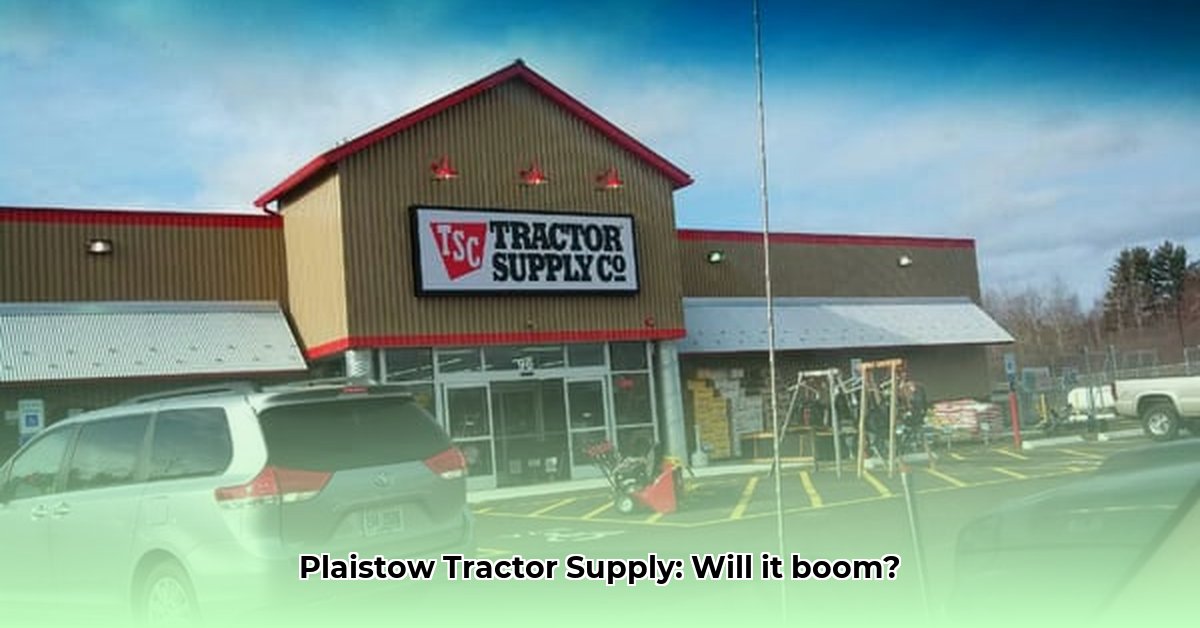
Plaistow Tractor Supply holds a strategically advantageous location, serving a broad customer base encompassing Hampstead, Merrimac, and surrounding towns. This geographic benefit, however, doesn't guarantee sustained success. A comprehensive analysis requires detailed performance data, currently unavailable. For comparison, see data from a similar store location like this Tennessee Tractor Supply.
The Missing Data: A Critical Limitation
The primary obstacle to a thorough assessment is the scarcity of publicly accessible performance data for the Plaistow Tractor Supply. Key metrics such as sales figures, customer demographics, and profitability remain elusive. This lack of transparency significantly hampers a precise evaluation of the store's financial stability and competitive standing. This information gap necessitates a multi-faceted approach focusing on alternative data sources and informed inferences.
Competitive Landscape: An Uncharted Territory
Another significant challenge is the absence of detailed information regarding the competitive landscape. Identifying competing businesses offering similar agricultural products and services within the region is crucial for understanding Plaistow Tractor Supply's market share and competitive positioning. Without this competitive analysis, strategic planning becomes significantly more difficult.
Actionable Steps: A Roadmap for Growth
To achieve a clearer understanding of Plaistow Tractor Supply’s potential and formulate an effective growth strategy, a multi-pronged approach is recommended. This strategy emphasizes data acquisition, operational optimization, and community engagement.
For Tractor Supply Company:
Phase 1: Immediate Actions (0-12 Months)
Comprehensive Market Research: Conduct thorough market research incorporating surveys, focus groups, and demographic analysis to identify unmet customer needs and refine the store's offerings and marketing strategies. This should include an evaluation of competitor actions and regional market trends.
Data Collection and Analysis: Implement robust data tracking systems to monitor key performance indicators (KPIs). This will include sales figures, inventory turnover, customer feedback, and, if applicable, online engagement analytics. This data will inform future decisions and highlight successful strategies.
Store Optimization: Based on collected data, optimize the store layout, product assortment, and in-store promotions to increase sales and efficiency. Precise placement of high-demand items and efficient inventory management will be key aspects.
Phase 2: Long-Term Strategies (12-60 Months)
Advanced Analytics Implementation: Invest in advanced analytical tools to provide real-time monitoring of KPIs and facilitate more data-driven decision-making, leading to improved operational efficiency and sales forecasting.
Strategic Expansion Exploration: Evaluate opportunities for expansion within the region, considering potential new store locations in underserved areas or expanding the current store's footprint if commercially viable.
E-commerce Integration Assessment: Conduct a feasibility study exploring the integration of online ordering and home delivery services to expand the store's reach and customer base.
For the Plaistow Community and Local Businesses:
Collaborative Growth Initiatives:
Foster strong community engagement through direct outreach, surveys, and focus groups to better understand local needs and preferences. Collaborate with other local businesses on joint marketing initiatives and explore potential strategic partnerships to create synergistic growth opportunities. Sponsoring local agricultural events can boost brand awareness and establish strong community ties.
Data Sources and Their Limitations
The following table summarizes the data sources utilized in this preliminary analysis and their inherent limitations:
| Data Source | Data Availability | Limitations |
|---|---|---|
| Publicly Available Store Information | Limited (Location, Hours) | Lacks key performance indicators such as sales data and customer demographics. |
| Online Review Platforms (e.g., Yelp) | Variable | May not be statistically representative of the overall customer base. |
| Tractor Supply Company Financial Reports | Available (Annual, Quarterly) | Provides aggregate company data but lacks store-specific performance metrics. |
This analysis, while preliminary, highlights the critical need for comprehensive data to accurately assess Plaistow Tractor Supply's performance. The strategic recommendations outlined above are predicated on securing the necessary data to refine projections and inform more effective strategies. The current lack of detailed, store-specific information significantly limits definitive conclusions. Further investigation and data acquisition are crucial to enhance the precision and depth of future assessments.
Analyzing Tractor Supply Store Performance with Limited Data: A Methodology
Given the limited data, a pragmatic approach is crucial for assessing the Plaistow Tractor Supply's performance. This involves incorporating readily available information along with insightful inferences.
Leveraging Available Information:
Regional Sales Trends: Analyzing Tractor Supply Company's overall financial reports and sales data from reliable sources like Nomad Data can paint a picture of broader market trends in the region which serves as a baseline for assessing the Plaistow store's potential.
Local Agricultural Assessment: Researching local agricultural production and identifying key crops or livestock provides a measure of potential demand for related supplies.
Competitive Landscape Observation: Observing the presence and activity of competing businesses helps define the market and gauge the Plaistow store's competitive position.
Alternative Data Sources: Exploring local news, community forums, and social media comments can yield valuable qualitative information revealing customer sentiment and insights into local market dynamics.
Inference and Observation: In the absence of precise quantitative data, relying on observable aspects such as parking lot occupancy, queue length, and customer traffic patterns can offer crucial insights.
This methodology, while acknowledging its inherent limitations, provides a workable framework for forming a reasonable understanding of Plaistow Tractor Supply's performance within its local market. Securing access to enhanced, store-specific data will significantly improve the accuracy and sophistication of future evaluations and projections.